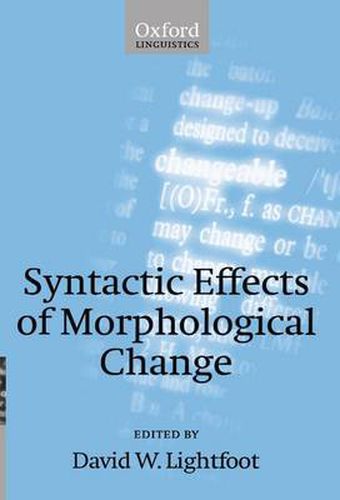Readings Newsletter
Become a Readings Member to make your shopping experience even easier.
Sign in or sign up for free!
You’re not far away from qualifying for FREE standard shipping within Australia
You’ve qualified for FREE standard shipping within Australia
The cart is loading…






David Lightfoot’s collection explores a central aspect of language change: the nature and degree to which changes in morphology (inflectional word endings, for example) cause changes in syntax (for example, in word order). The 22 contributors consider such phenomena within the context of Chomsky’s minimalist revision of his principles (of universal grammar) and parameters (of individual languages) theory. They also address some of the main unanswered problems associated with Professor Lightfoot’s hypothesis that all grammatical change is driven by the way in which children acquire language. These questions are discussed in the context of a wide range of languages by distinguished scholars from around the world. There are 21 chapters divided into 4 parts: Morphologically Driven Changes, Indirect Links Between Morphology and Syntax, Independent Changes in Movement Operations, and Computer Simulations.
$9.00 standard shipping within Australia
FREE standard shipping within Australia for orders over $100.00
Express & International shipping calculated at checkout
David Lightfoot’s collection explores a central aspect of language change: the nature and degree to which changes in morphology (inflectional word endings, for example) cause changes in syntax (for example, in word order). The 22 contributors consider such phenomena within the context of Chomsky’s minimalist revision of his principles (of universal grammar) and parameters (of individual languages) theory. They also address some of the main unanswered problems associated with Professor Lightfoot’s hypothesis that all grammatical change is driven by the way in which children acquire language. These questions are discussed in the context of a wide range of languages by distinguished scholars from around the world. There are 21 chapters divided into 4 parts: Morphologically Driven Changes, Indirect Links Between Morphology and Syntax, Independent Changes in Movement Operations, and Computer Simulations.